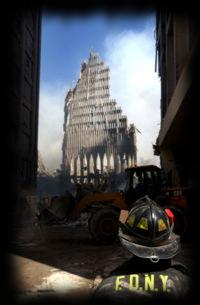WTC DUST: HEALTH PROBLEMS ARISE
More than 5 years after the World Trade Center disaster on September 11, 2001, uncertainty and controversy remain about the health risks posed by inhaling the dust from the collapse of the twin towers, the subsequent fires, and the cleanup effort. In addition to the matter of the immediate and persistent respiratory effects on “first responders,” occupants of the towers, cleanup workers, and neighborhood residents, concern has arisen about longer-term risks, including the risk of cancer.

The level of concern with regard to the respiratory effects of the disaster may well be compounded by the psychological consequences. Already, some responders have received compensation, and litigation is in progress for thousands of people with alleged illnesses caused by inhaling the dust.
With the collapse of the towers, the air at ground zero became heavily contaminated. Subsequently, the smoke and dust from fires and resuspended debris and the engine exhaust from cleanup equipment and vehicles were major sources of airborne contaminants. Because air was not sampled immediately after the disaster, data are lacking on the identity of the contaminants and their concentrations in the plume at that time.
Analyses of settled dust samples revealed the presence of combustion-related carcinogens, building materials, and some asbestos. The samples were dominated by larger particles, which settle more quickly than smaller ones. The smaller particles, which can penetrate into the deep lung and would have been generated by burning materials, were probably not captured in these samples.
Source: New England Journal of Medicine…for full article go to – NEJM — The Legacy of World Trade Center Dust>
About this entry
You’re currently reading “WTC DUST: HEALTH PROBLEMS ARISE,” an entry on Harvey Tobkes.
- Published:
- 05.30.07 22:30
- Category:
- Health


Comments are closed
Comments are currently closed on this entry.